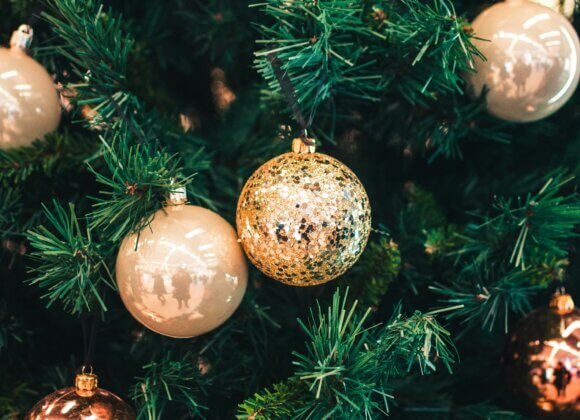Tea and its fascinating diversity
There are drinks that are simply timeless. And tea is undoubtedly one of them. With a history dating back as far as 5,000 years, tea has captured not only cultures, but also the hearts of millions of people worldwide. Its variety, its flavors and its ability to enliven the senses make it a constant in our diet that has been appreciated throughout the centuries and continues to be appreciated. But what secrets are hidden in this drink, which not only warms us, but also refreshes? To answer these and other questions, we turned to an expert at Sir Harly’s Tea Vienna.
The birth of the popular hot drink
The leaves of the tree Camelia Sinensis were already valued in the Yunnan region of China about 5000 years ago – but at that time rather as medicine. Tea was chewed, as a remedy against poisoning. According to legend, Emperor Shennong was the first to drink tea because a tea leaf fell into his hot water and he took a liking to the taste. Buddhism in particular contributed to the spread of tea: Monks consumed tea to stay alert during long meditations.
In our latitudes, moreover, all herbal and fruit infusions are also called tea. These are not actually tea at all, but the German language does not have its own word for these infused drinks.
The special thing about tea
Tea is the most consumed beverage in the world after water and probably the most diverse beverage in the world, which is enjoyed in many different variations and often with other ingredients (milk, sugar, spices, fruits). All variants result in a highly aromatic drink that is pure pleasure in all seasons. It warms in winter, cools in summer, the caffeine keeps us lively, and it’s healthy to boot.
The difference between teein and caffeine
Chemically, teein and caffeine are identical. However, the stimulating effect between coffee and tea is different. Coffee quickly perks you up, but the effect doesn’t last long. When drinking tea, the effect of the caffeine sets in later thanks to the tannins, but lasts longer. That is why the vernacular also says: tea stimulates, but not up.
The best tea preparation – loose or in a bag?
Tea expands when brewed and this is usually limited in tea bags, which is why only the remnants of tea production (tea dust) are used. Loose tea is usually large-leaf, can be used several times and develop infusion by infusion, which has a positive effect on the aroma and taste.
Health properties of tea
“Tea drinkers live longer!” Many studies seem to prove that tea is healthy for us. The caffeine makes us cheerful, L-theanine has a relaxing and anxiety-relieving effect at the same time. The polyphenols contained especially in green tea have antioxidant and anti-inflammatory effects and can positively influence the immune system. Healing effects are measurable, but direct evidence is lacking. In any case, tea has an indirect effect – for example, more unsweetened tea is healthier than sugary sodas.
Pollutants in tea
Tea is rather healthy. However, it could be harmful to health if pesticides or fertilizers are used during cultivation and residues of these may end up in the final product. Organic and “natural” qualities provide a remedy.
Attention caffeine
Teas promote well-being and are tasty. However, since real tea contains caffeine, you should not overdo it here and do not drink tea too late in the evening. Pregnant women and children in particular should enjoy herbal or fruit infusions without caffeine more often instead of tea.
The difference between black and green tea
Tea leaves can be processed into both black and green tea after harvest. The difference lies in the oxidation. While in green tea, after the plucking, withering and rolling process, the moisture content is immediately reduced to below 3% by roasting or steaming, black tea oxidizes over a longer period of time. This ensures that the leaves turn brown and become black tea (100% oxidation).
The current trend teas
There is currently a trend away from black tea towards green tea, and special teas are increasingly inviting people on journeys of discovery.
Trendy and available everywhere in recent years are so-called “ready-to-drink” teas: matcha, bubble tea and similar developments. As much as this expansion of the tea world in Europe is to be welcomed, care must be taken to ensure that tea continues to be drunk naturally and is not developed into sugar bombs.
The rarest and most expensive tea in the world
The currently most expensive and probably rarest tea probably comes from the Wu-Yi mountains of Yunnan (China): Da Hong Pao (red robe). According to legend, the mother of an emperor of the Ming Dynasty was cured of an illness by a certain tea and out of gratitude the emperor put a red robe around these four bushes. Supposedly the best quality of this tea comes from these mother trees and has been declared a National Treasure in China. In 2022, one kilogram was sold for over 1 million euros.
Landlust: Luxury real estate in the countryside
Urban: Luxury properties Vienna Urban
Villa location: Luxury properties Villa location
For ski fans: Luxurious living for ski fans
On the waterfront: luxurious living on the waterfront
Hotel service: Luxurious living with hotel service
Exquisite view: Luxurious living with an exquisite view
For golf fans: Luxurious living for golf fans
Classic elegance: Luxurious living in classic elegance













